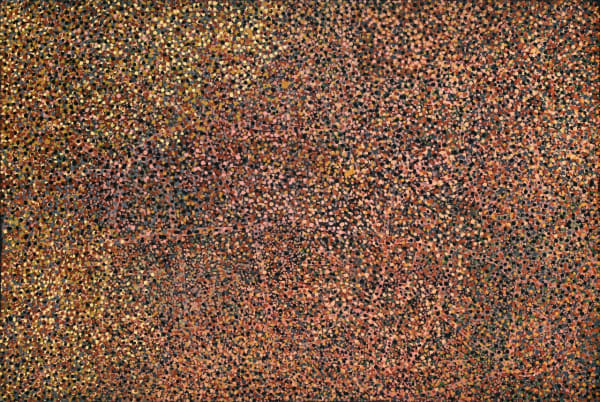Emily Kam Kngwarray Anmatyerr language group, circa 1914-1996
Alternative spellings: Emily Kame Kngwarreye
Working in a remote, north-west corner of the Simpson Desert, on land annexed by pastoral leases during the 1920s, Emily Kam Ngwarray became, in the final decade of her life, perhaps the most celebrated and sought after Australian artist of her time.
A leading figure in eastern Anmatyerr ceremony, Ngwarray was also the artist in whose work many white Australians first felt the force of an Indigenous art that could be seen to negotiate a space both within the aesthetics of Western abstraction and the timeless precepts of Aboriginal cultural traditions.
Ngwarray attained artistic maturity as a woman in her seventies, not long converted to the techniques of painting on canvas, but with decades of painting in a ceremonial context and activity with the Utopia Women’s Batik Group behind her – as well as life as a camel handler and stockhand. In an extraordinarily prolific eight years of professional painting, she produced magnificent canvases in which she appears to have aimed for essentialist visions of the multiplicities and connectedness of her country, as imaged in terms of its organic energies. Ngwarray’s vital traceries both conform to, and seem to expand beyond, her clan codes, in abstractions of ceremonial markings and imagery of her country’s flora and fauna.
During the early 1990s, Ngwarray developed a painting technique that literally embodied her sense of the explosive, yet ordered, rhythms of the natural world: she energetically worked her canvas with fluid dots or blobs of colour that formed a pulsing layer over the ‘mapped-out’ underpinnings of her paintings. Later, she embraced the austerities of stripe compositions, and in seething, linear ‘yam Dreaming’ paintings, before she created the remarkable blocky gestural abstractions of 1996, the final year of her life.
Deborah Edwards in 'Tradition today: Indigenous art in Australia’, Art Gallery of New South Wales, Sydney, 2014
Fortescue, Elizabeth. "Superstar of Australian art Emily Kam Kngwarray to get Tate Modern show in 2025." The Art Newspaper. 1 Dec. 2023.












